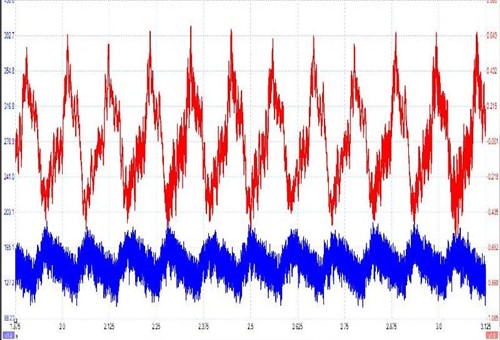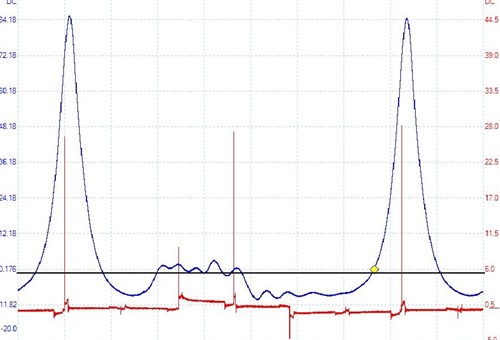
This writer was recently invited by three young mechanics to consult on a misfire problem on their customers’ vehicle. This is not strange in itself- it happens fairly frequently, but in this case, the business was owned by three young mechanics who had pooled their resources to open up a three-bay, two-hoist mechanical workshop. This too, was not terribly strange, but what was strange, is the fact that that they could not answer their customers’ simple question- the question being- “How do you fix the problem if as you say, you cannot find any fault codes on the vehicle?”
This question put this writer in mind of the many instances when customers were referred to his workshop with vehicles that had unresolved drivability issues because previous diagnostic/repair attempts yielded “No Fault Found” results. If you are new to the car repair industry you might be wondering how it happens that misfires and other symptoms could be present in the absence of trouble codes, and in this article, we will explain how it happens, and how it is sometimes a sort of blessing in disguise that could make finding some faults a lot easier. Let us start with saying that-
The history of OBD systems is along and convoluted one and we need not spend time discussing the transition from OBD I to OBD II, beyond saying that contrary to a popular belief among many mechanics and most of the public, these systems were neither designed nor intended to be diagnostic systems.
We can safely ignore OBD I since it is obsolete, but OBD II is very much alive, and subject to constant change and adaptations to accommodate both new technologies, and ever more stringent emissions regulations. Moreover, since the average age of all vehicles in Australia is only 10.1 years (unchanged from 2015), most light vehicles in Australia are running on relatively up-to-date versions of OBD II software. Why is this relevant to the main topic of this article, you may ask?
You may well ask because OBD II is designed and intended primarily to be an exhaust emissions management program. Any diagnostic ability that an OBD II does have is intended to highlight faults, defects, malfunctions, and failures in its own monitoring circuits, as opposed to highlighting such faults, defects, malfunctions, and failures in a manner that makes it easy for us to repair the faults, defects, malfunctions, and failures.
This is an important distinction because, in markets where vehicles have to undergo regular and compulsory emissions testing, the test equipment tests the OBD II systems' functionality, i.e., its ability to monitor itself, as opposed to finding faults that might cause the vehicle to fail an emissions test. Therefore, seeing that OBD II systems are emissions management systems first and diagnostic systems a somewhat distant second, what do we do when a vehicle exhibits driveability issues but the OBD II system on that vehicle fails to detect the root cause of the problem?
The first step in understanding why this happens is to understand not only how ECUs perform tests, but also the limitations of OBD II systems. Let us look at the three categories of tests ECUs perform-
Circuit integrity tests
As the term suggests, an ECU tests all emissions related circuits for short circuits to battery positive, short circuits to ground, and for breaks and interruptions in continuity, i.e., it checks for open circuits. With very few exceptions, these kinds of issues will typically set one or more fault codes.
Rationality tests
During a rationality test, an ECU compares two sets of input data obtained from two different sources to see if they correlate to the current operating conditions. One example of this would be if the throttle pedal position sensor reported a large input, but input data from the throttle position sensor in the throttle body and the MAP sensor do not agree on the extent of the change reported by the throttle position sensor. An ECU interprets such differences as irrational signals, and it might set an assortment of trouble codes as a result. Then again, it might not set fault codes if the miscorrelation does not exceed a pre-defined threshold.
Functionality tests
In these kinds of tests, an ECU monitors an entire system, two examples of which would be the EGR or fuel delivery system. There are other examples, but the point is that the function and operation of every circuit, component, or sensor in the system being tested is checked against either look-up tables or other types of pre-programmed data, which might include allowable minimum and maximum thresholds and other operating parameters.
Moreover, functionality tests come in two “flavours”, these being intrusive and non-intrusive tests. An example of an intrusive test would be if the ECU say, closes the EGR valve, and then looks for confirmation of the command from the oxygen sensors. If the change in the input data from the oxygen sensors falls within a pre-programmed range or pattern, the ECU will know that the EGR valve did in fact, close, and is no longer letting exhaust gas into the cylinders.
On the other hand, an example of a non-intrusive test would be if the ECU monitors long-term fuel trims under steady cruising conditions. If the long-term fuel trim values fall within an acceptable range, the ECU does not have to change any operating parameter(s) to bring the fuel trim values into an acceptable range. In other words, the ECU does not have to “intrude” into any system to change anything to correct the long-term fuel trims.
On the face of it, these three types of tests ECUs perform should be able to detect any fault, failure, or malfunction in any system and/or component that has the potential to affect exhaust emissions, and while most faults and/or malfunctions are detected most of the time, some fall through the cracks, so to speak. There are many reasons why this can happen, but in most cases, it happens because of the-
OEM manufacturers go to great lengths to ensure that both the design and implementation of OBD II systems on their products comply with regulatory standards, but despite that, some things are beyond the control of OEM manufacturers. The first is the physics of reciprocating masses; the second is the inherent variability of modern mass-production methods of anything from pistons, to sensors, transistors, and capacitors, and the third is the real-world operating conditions of their products.
Limited space precludes a comprehensive discussion of these issues, but we can reduce them to their simplest form by saying that-
Taken together, these variables present automotive engineers with considerable challenges in designing electronic monitoring systems that can account for all possible variables on the one hand, or distinguish between critical variables, and variables that can be safely ignored, on the other.
While it is technically possible to achieve both outcomes, the fact that cars are not built to last forever makes this a prohibitively expensive exercise, so OEM manufacturers do the next best thing, which is to make some aspects of OBD II systems operate within broad ranges, as opposed to making them enforce strictly defined operational boundaries. So, what does this mean in practice? Let us look at a practical example of how this works, by discussing-
We have all seen engines with clearly discernible misfires on one or more cylinders, and yet, there were no illuminate warning lights, and no fault codes were stored. We also know that misfiring cylinders are not always identified by convenient trouble codes, but one would expect to find at least a random misfire code, or failing that, a cylinder power contribution code, and this was exactly the situation this writer found when he arrived at the three young mechanics’ workshop. There were no illuminated warning lights and no trouble codes on the problem vehicle.
The vehicle in question was way past its prime, but even so, it was in a reasonable condition, and there were no obvious fluid leaks or other issues on the engine, which started readily, but idled with a discernible misfire. There was no point in doing what the young mechanics had already done, which was to obtain two scope traces, which are reproduced below-

Image source: https://www.searchautoparts.com/sites/www.searchautoparts.com/files/images/ma0813-d7.jpeg
This trace shows starter motor current draw peaks on the top and a series of exhaust pulses obtained with a pressure transducer and a DSO on the bottom. While the current draw trace is not perfect, the variations in amplitude are too small to suggest serious mechanical issues such as poorly sealing valves.

Image source: https://www.searchautoparts.com/sites/www.searchautoparts.com/files/images/ma0813-d8.jpeg
This trace was also obtained with a pressure transducer and a DSO, but only on cylinder #1. From this, it was obvious that there were no issues with the peak cylinder pressure in cylinder #1, the ignition timing was correct on cylinder #1, and the injector pulses (shown in red at the bottom) were properly phased with the ignition timing on cylinder #1. This trace confirmed that there were no valve issues, based on the absence of undue amounts of turbulence in cylinder #1. One of the young mechanics explained that they did not test all six cylinders because they only wanted to check the ignition and injection timing; if this was correct on one cylinder, it would almost certainly be correct on the remaining five cylinders- which may not always be true.
According to the trio of young mechanics, the traces showed that the engine had no serious mechanical issues, and it should therefore not have a misfire, given that there were no stored trouble codes. However, as a classic example of how we sometimes look for the big things before looking at the small things, another young mechanic explained that they have not checked the ignition coils for induction issues, nor the plug leads for signs of current leakage since both the coil(s) and plug leads were replaced (by themselves) as a set “less than six months ago”. The implication was, therefore, that neither the ignition coil(s) nor one or more plug leads could be the cause of the misfire.
However, removing some cosmetic engine covers to gain access to the plug leads turned up this-

Image source: https://www.searchautoparts.com/sites/www.searchautoparts.com/files/images/ma0813-d6.jpeg
This was clear evidence of current from a plug lead leaking to ground, and it was this that produced the misfire, but on cylinder #4, which was not checked with the pressure transducer. Replacing the plug lead resolved he misfire, but it also did two other things. The first thing was that it showed up serious flaws in the young mechanics’ diagnostic process, and the second was that it demonstrated the young mechanics’ collective lack of understanding of how OBD II systems detect and report faults. Let us look at the first thing first-
In this particular instance, the young mechanics had jumped to an awful lot of conclusions and assumptions, most of which were either downright wrong or were based on flawed and/or incomplete data.
For instance, while assuming that ignition timing would not vary between cylinders could perhaps be forgiven, using data from one cylinder to conclude that there would be no variation in peak cylinder pressures and injection timing/duration between all other cylinders is just wrong. Moreover, an assumption like this is also a sign of sloppy thinking resulting from an over-reliance on scan tools and trouble codes.
Worse, though, the young mechanics also failed to obtain a trace of the crankshaft position sensor’s output to check for signal dropouts. They justified this omission by saying that since there was a strong ignition signal on cylinder #1, there would likely be strong ignition signals on all the remaining cylinders as well, which was bizarre, to say the least since it assumed that the crankshaft position sensor could not have been at fault, which brings us to the young mechanics’ collective-
By this time, the customer was getting restive and insisted on an explanation of why both the vehicle's "computer box" and the "fancy diagnostic computer" failed to detect the misfire, at which point one of the young mechanics launched into a convoluted exposition on the finer workings of misfire detection systems.
In short, the apparent leader of the trio explained to his customer that misfire detection systems use the crankshaft position sensor to monitor the crankshaft’s speed by counting the number of signals the sensor creates during each engine cycle, which signals are counted by the ECU. Thus, when the ECU detects a variation in the crankshaft’s rotational speed that exceeds 2% of the crankshaft’s current speed, the ECU will interpret the variation as a misfire, and set one or more misfire codes as a result.
The young mechanic concluded his explanation by saying that as far as he was aware, misfire codes always set when a crankshaft’s rotational speed varies by 2%. Therefore, he could not explain why the misfire detection system failed to detect and report the misfire in this case- hence the presence of a consultant to find the “root cause” of the problem.
At a basic level, this explanation was true enough, but on the one hand, it missed the point that a 2% variation in a crankshaft’s rotational speed will not always set misfire codes, and it demonstrated a lack of understanding of the physics of both rotating and reciprocating masses, on the other. It also failed to account for the fact that crankshaft position sensors, and particularly Hall-effect sensors, lose some sensitivity over time because of their long-term exposure to heat and vibration.
The three hapless young mechanics were clearly in a deep rabbit hole of their own making, and since this writer had no desire to embarrass them in front of their customer, he called one of them aside to explain both the nature and the resolution of the problem to him, which we will keep as brief as possible-
Since the last point was the most likely cause of the problem (apart from the damaged plug lead) this writer invited the young mechanics to replace the crankshaft position sensor, and to induce a misfire on cylinder #4 by fitting the damaged plug lead again, but to make sure it shorted to ground as before. The object of this exercise was to see if the crankshaft position sensor had lost some sensitivity; if it did, a new sensor will almost certainly detect a variation in the crankshaft’s speed, thus causing a misfire code to set.
That is exactly what happened with the new sensor; it detected the variation in the crankshaft’s rotational speed caused by the induced misfire, and the CHECK ENGINE light illuminated within about 5 seconds of the engine starting and settling into a steady idle. The subsequent scan turned up codes P0272 – “Cylinder 4 Contribution/Balance Fault”, and P0304 – “Cylinder 4 Misfire Detected”, which was confirmed by verifying that the ECU had disabled the injector on cylinder #4 to protect the catalytic converter, which leaves us with this-
It might be tempting to view this sad tale as nothing more than a somewhat entertaining comedy of errors performed by under qualified actors. However, when a situation like this is viewed from a customer's perspective, there is nothing funny about it at all, so how can we prevent ourselves from being actors in similar comedies?
One sure-fire way would be to not open a workshop if you are not ready to, but there are other, more practical ways, as well. For one thing, it helps not to see trouble codes as the be-all and end-all of diagnostics, to recognise that diagnostic flow charts are largely useless unless you know and understand what you are testing, and to understand how and why OBD II systems perform the tests they do.
Most importantly though, the best way to avoid falling into a rabbit hole is to understand how the various engine and fuel management systems interact and communicate with each other. Once you understand this, you will understand why fault codes are sometimes not set, which is almost invariably the most valuable diagnostic clue you have on which to build a logical diagnostic process.
After all, all petrol engines are the same: all require fuel, air, sufficient compression, and an ignition spark to work, and had the three young mechanics understood this, instead of relying on oscilloscope traces that told them nothing of any real diagnostic value, they would not have had the need to call a consultant.
In case you were wondering- no, this writer did not invoice the three young mechanics for the consultation they should not have needed. Their embarrassment over their collective lack of even a basic understanding of what OBD II systems are and how they work seemed to this writer to be sufficient punishment.